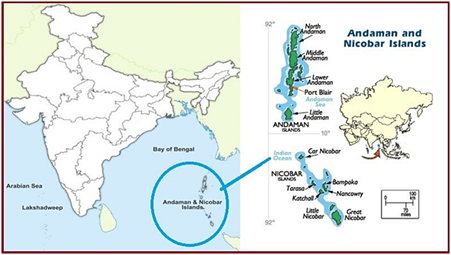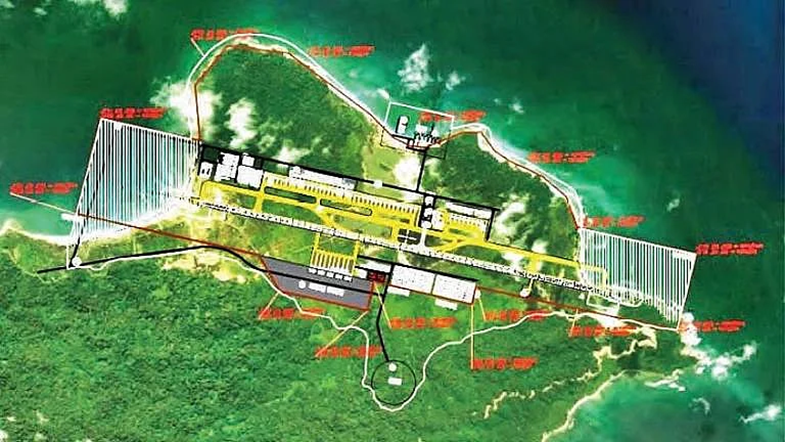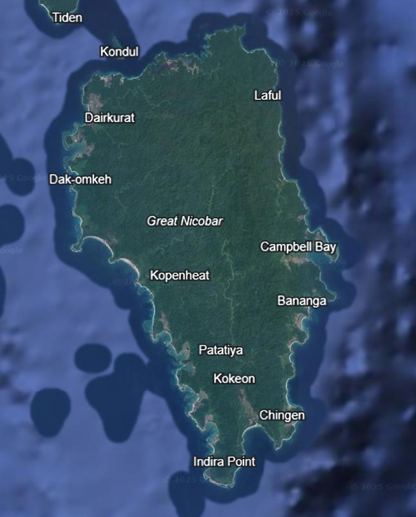The Great Nicobar Island Project, a multi-billion-rupee mega infrastructure plan, is at the heart of India’s strategic and development agenda. While the government highlights it as a game-changing initiative for the Indian Ocean Region, critics warn that it risks becoming one of the country’s most controversial projects due to its ecological and social impact.
Government’s Vision
Prime Minister Narendra Modi recently shared an article by Union Environment Minister Bhupender Yadav, calling the project “of strategic, defence and national importance” and a step towards transforming Great Nicobar into a hub of maritime and air connectivity.
The integrated plan includes:
- An International Container Transhipment Terminal (ICTT) with a capacity of 14.2 million TEU
- A greenfield international airport
- A 450 MVA gas and solar-based power plant
- A 16,610-hectare township
Supporters argue that the island’s location near the Malacca Strait gives India a vital edge in trade and security. Proponents also stress that environmental safeguards and compensatory afforestation are built into the plan, making it possible for economy and ecology to coexist.

In an opinion column, BJP leader and author Tuhin A. Sinha described the project as “an ambitious leap” that will boost jobs, connectivity, and India’s role in the Indo-Pacific region (NDTV Opinion).
Environmental and Social Concerns
Despite these promises, the project has triggered widespread criticism.
Tribal Rights at Risk
- The Shompen, a Particularly Vulnerable Tribal Group (PVTG), and the Nicobarese face threats of displacement, disease exposure, and cultural loss.
- The Guardian reported that 39 international scholars described the project as “a death sentence for the Shompen”.
Ecological Fragility
- Critics point to large-scale deforestation, with estimates suggesting 32 to 58 lakh trees could be cut.
- The project overlaps with critical habitats such as Galathea Bay, a nesting site for the endangered leatherback turtle, along with coral reefs, saltwater crocodiles, and unique flora. (The Wire, Le Monde)
Legal and Procedural Issues
- Former Environment Minister Jairam Ramesh called it a “maha ecological disaster” in The Economic Times, alleging that tribal rights under the Forest Rights Act remain unsettled.
- Critics argue that public consultations excluded original inhabitants, as highlighted in a Down to Earth investigation.
Natural Disaster Risks
- Great Nicobar lies in a seismically active and tsunami-prone zone. Experts fear that building major ports, airports, and townships in such a fragile environment could heighten risks. (Time Magazine)

Political Opposition
Congress leader Sonia Gandhi, writing in The Wire, termed the project an “environmental and humanitarian catastrophe”. She argued that spending ₹72,000 crore on such a plan threatens indigenous communities, undermines biodiversity, and ignores disaster vulnerabilities.
Rahul Gandhi has also raised concerns that compensatory afforestation planned in states like Haryana cannot replace the loss of pristine tropical rainforest in the Nicobars.
A Divided Debate
| Government’s Stand | Critics’ Concerns |
| Strengthens India’s maritime trade and defence presence. | Threatens indigenous tribes and violates rights under the Forest Rights Act. |
| Creates jobs, connectivity, and a logistics hub. | Risks deforestation, biodiversity loss, and ecological collapse. |
| Environmental safeguards and compensatory afforestation included. | Compensatory forests cannot replicate Nicobar’s unique biodiversity. |
| Strategically vital location near Malacca Strait. | Island’s seismic vulnerability raises safety concerns. |
The Great Nicobar Island Project raises crucial questions of urbanization, ecological protection, disaster management, and cultural inclusion, and the answers to these will ultimately define its future.
The island is like a living laboratory: Can we create settlements that coexist with rainforests? Can infrastructure remain safe and resilient in a region prone to earthquakes and tsunamis? Can the knowledge and traditions of local communities be made part of the development process, rather than being sidelined?

The answers to these questions will shape not only the destiny of Great Nicobar, but also India’s broader vision of development in ecologically fragile regions. Ultimately, the project’s identity will rest on whether it can strike a balance between progress and preservation — a balance that future generations can look upon with pride.
